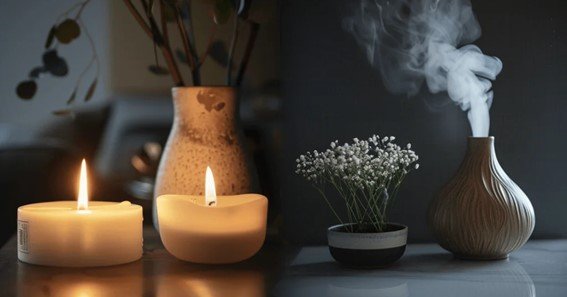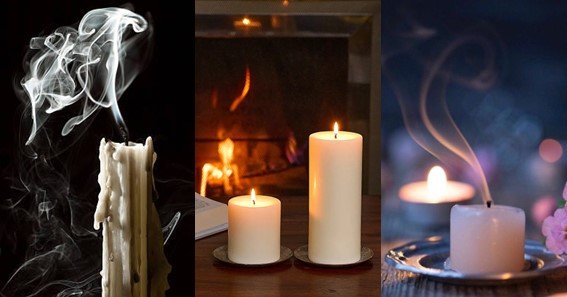Candles are a popular way to create ambiance and a cozy atmosphere at home, but concerns about their potential to cause indoor air pollution have been rising. So, do candles cause indoor air pollution? The short answer is yes, but the extent of their impact and the associated health risks depend on several factors, including the type of candle, how it’s used, and the ventilation in the space.
Understanding How Candles Affect Indoor Air Quality
Burning candles releases various pollutants, including particulate matter (PM2.5), volatile organic compounds (VOCs), and, in some cases, toxic chemicals like formaldehyde and benzene. These emissions can affect indoor air quality, particularly in poorly ventilated spaces.
- Soot and Particulate Matter: The burning of candles, especially those made from paraffin wax, can produce soot, a fine black or brown powder that can accumulate on walls, ceilings, and inside your lungs when inhaled. Soot contains PM2.5, which can penetrate deeply into the lungs and even enter the bloodstream, potentially leading to respiratory and cardiovascular issues.
- Volatile Organic Compounds (VOCs): Candles can also emit VOCs such as formaldehyde and toluene. These chemicals can irritate the respiratory system, trigger asthma, and may even be linked to more serious health concerns over prolonged exposure.
- Type of Candle Matters: The wax and wick used can significantly impact the level of pollutants. Paraffin candles are known to release more harmful substances compared to natural alternatives like beeswax or soy candles. Beeswax and soy candles generally produce less soot and fewer VOCs, making them safer for those concerned about air quality.
Are Candles Harmful?
The potential harm from candles largely depends on usage. Burning candles occasionally and in well-ventilated areas is unlikely to pose significant health risks. However, frequent low-quality candles in poorly ventilated spaces could increase exposure to harmful pollutants. People with respiratory conditions, children, and pets might be more vulnerable to these effects.
Safer Alternatives and Best Practices
If you’re concerned about the potential risks, consider these tips to reduce indoor air pollution from candles:
- Choose Natural Candles: Opt for candles made from beeswax, soy, or coconut wax, which tend to burn cleaner.
- Avoid Scented and Dyed Candles: These can emit more VOCs and soot. If you enjoy fragrances, consider using essential oil diffusers instead.
- Maintain Proper Ventilation: Always burn candles in well-ventilated areas to allow pollutants to disperse.
- Trim the Wick: Keep the candle wick trimmed to 1/4 inch to reduce soot production.
- Limit Burn Time: Avoid burning candles for more than a few hours at a time to minimize indoor pollution.

Conclusion
While candles do contribute to indoor air pollution, using them mindfully can help minimize the risks. By choosing higher-quality, natural candles and ensuring good ventilation, you can enjoy the warm glow of candles with fewer health concerns.
FAQ
Do all candles cause indoor air pollution?
Yes, all candles can contribute to indoor air pollution, but the extent varies depending on the type of wax, wick, and fragrance used.
Are paraffin candles more harmful than others?
Yes, paraffin candles tend to release more soot and harmful chemicals compared to natural alternatives like beeswax or soy candles.
Can burning candles trigger asthma?
For some individuals, particularly those sensitive to smoke or fragrances, burning candles can trigger asthma symptoms.
Is it safe to burn scented candles?
Scented candles can emit more VOCs, but using them occasionally in well-ventilated spaces is generally safe for most people.
How can I reduce the pollution from burning candles?
Opt for natural candles, maintain proper ventilation, trim the wick, and avoid burning candles for extended periods.










